Willow fence

It is no secret that behind a beautiful fence you can hide from prying eyes and organize your cozy space. And the fence does not have to be concrete, brick, iron. A truly graceful hedge is a living structure. An example of this would be a willow fence.
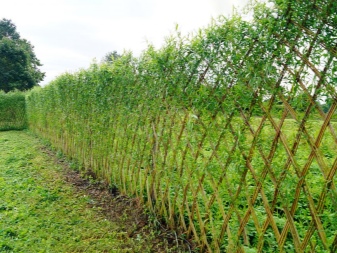
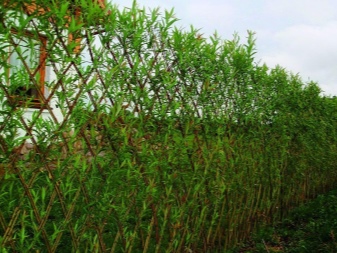
Advantages and disadvantages
There are many suitable plants for creating a hedge, but willow is practically out of competition. Gardeners have long appreciated her pliability and unpretentiousness. Among other advantages of willow for creating a hedge, the following are distinguished:
- the design will be durable;
- the plant takes root easily;
- willow is easy to care for;
- it grows quickly, gives side shoots actively;
- perfectly propagates by cuttings;
- the plant is frost-resistant;
- will reliably protect the site from the wind;
- will not allow animals to enter the territory.
Finally, it is very beautiful. But the hedge will take its final look in 2-3 years after the installation of the structure. Willow creates both monolithic hedges and complex wicker forms. With the help of a willow fence, the space can be zoned, and this technique is often used by landscape designers.
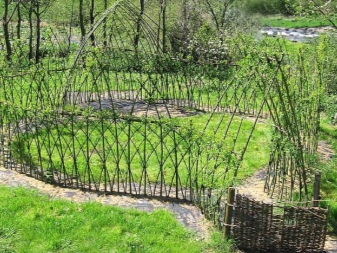
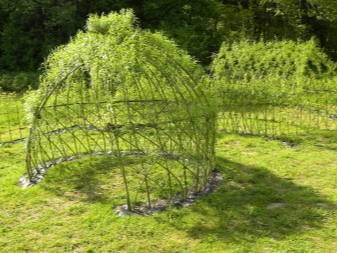
But the plant has actually only one minus - the tree is growing rapidly. Actually, at the same time these properties of the tree are both a plus and a minus. The willow will quickly and reliably give a lot of growth, they constantly need to be uprooted in order to maintain the shape of the hedge.

Which varieties are suitable?
If it is decided to make such a living fence, the next step is to select a variety. Willow belongs to the willow family, which is half a thousand species. The plant actively takes root in a moderately cool climate. To create a hedge, rare varieties are not needed: the most popular and unpretentious ones will do. These are the varieties that are often used for hedges.
- Purple Nana. This variety belongs to shrubs. The plant can stretch up to 4 m, has bluish leaves with a "gray" bloom. The variety blooms in the first month of summer. The honey earrings turn purple, hence the name of the variety. Bumblebees and butterflies flock to the flowers. By the way, this variety is considered useful for a city dweller: it neutralizes harmful impurities in the air (not completely, of course, but the tree really performs some functions of sanitation). If you care for a willow hedge of this variety, it will last 30 years.
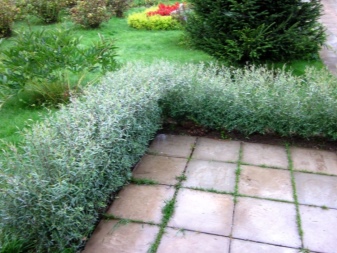
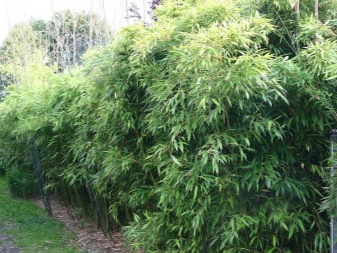
- Holly. And this variety is probably the most popular from the point of view of building a countryside. A rounded shrub can grow up to 9 m. The holly willow does not actually make claims to the soil, it is as unpretentious as possible. She does not need abundant watering, because sandstones and loams are normal soil for this tree. By the way, in addition to living fences, various decor and interior items are often woven from willow of this variety. The tree grows well. It is interesting that many of this willow variety is better known under the name "willow".

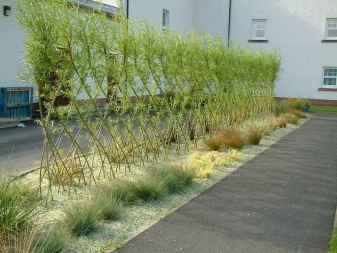
- Babylonian (weeping). This decorative tree is also unpretentious to the characteristics of the soil, it takes root almost everywhere. The variety is high: the tree can rise up to 12 m. It is planted near water bodies. The branches of the tree hang down, their color is reddish-yellow. The variety is growing actively.

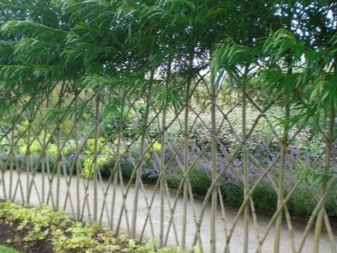
- Ural winding. It is a globular willow that looks good in any season. Not a particularly tall variety, it grows up to 3.5 m. It tolerates haircuts well, builds up green mass well. But the plant is quite capricious: at least it does not like an arid climate.The tree needs not only to be watered, but also to spray the crown in a timely manner.
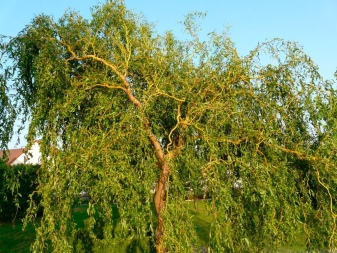
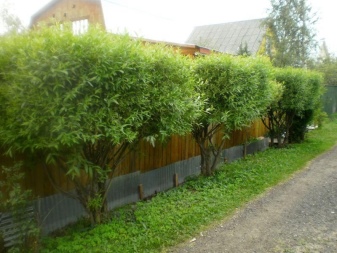
- Volchnikovaya. It grows up to 6 m, blooms early - in April-May. Its leaves are glaucous. This is a honey variety, willow grows very quickly, it is loyal to haircuts. It is usually planted in sandy soil, but limestone and loam are more suitable for it. The variety is frost-resistant. The tree will become a real hedge in 2 years.
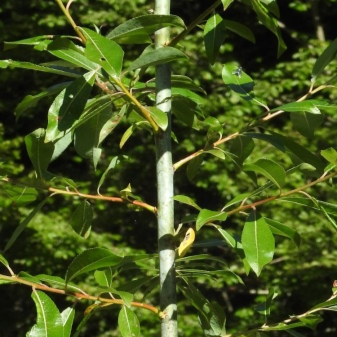
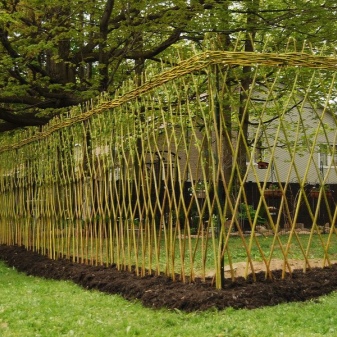
- Rod-shaped. It grows very quickly, it is used mainly for weaving. It grows up to 6 m. The branches of the variety are erect, have a grayish tint. Good for hedges too.
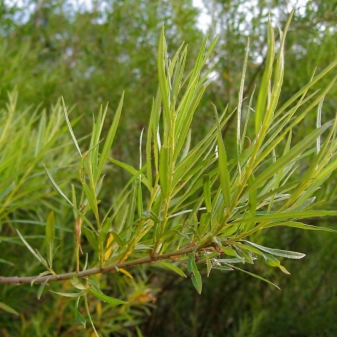
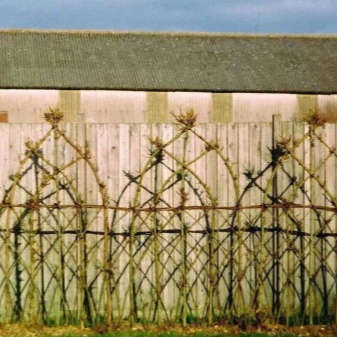
There are many options for creating a tree-like fence. If this point has been passed, it is time to decide according to what scheme the fence will be trailed.
Weaving patterns
Each of the schemes is beautiful in its own way. It is also impossible to say that one is much more complicated than the other. What options are there?
- Weaving in one rod. In this case, the seedlings are planted at intervals of 10-20 cm. True, after wintering, not all shoots may come to life, you need to be prepared for this.
- Weaving in 2-3 rods. Such weaving leaves no chance for the pattern to disintegrate. With this scheme, you need to plant not one plant, but two (or even three).
- Cross braiding. The option is similar to the first one. When weaving, the seedlings will stand diagonally, therefore an erect rod is planted, and diagonal ones are already attached to it. This rod will be the base of the entire structure, the fence will be strong, it will not fall apart.
There is another option, which is not yet very popular - or, more precisely, not quite familiar for our latitudes. Landscape designers now have this alternative: freestanding willows. The tree is planted in a permanent place. The trunk of the willow is constantly pruned for the first two years to prevent the growth of lateral shoots.
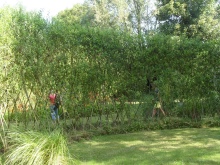
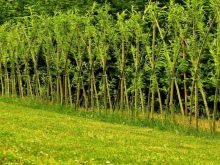
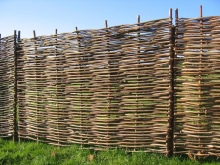
Required tools
The choice of tools depends on which weaving pattern is chosen. To build a vertical fence, you will need:
- secateurs;
- mallet;
- wire;
- nails;
- hammer;
- pegs;
- rope.
To build a horizontal fence, come in handy:
- hammer and nails;
- secateurs;
- rope (or wire, or tape).
Step-by-step instructions may require additional tools. But usually this is what is on the farm; a separate purchase is not required.

How to do it?
The owner of the site has two options - to form a green fence from a living tree with his own hands or to create a decorative hedge from twigs.

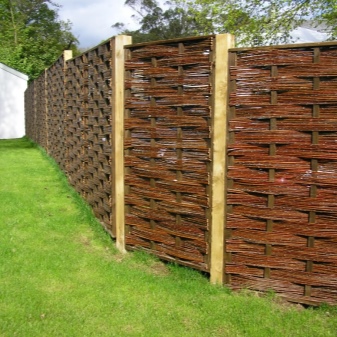
From a living willow
You can plant a tree from April to November, it all depends on the regional climate. If the plant is thermophilic (a specific variety), it can be planted in late spring, early summer.
Planting material must be prepared in the spring, before the leaves appear, or in the fall, after the leaves have fallen off.
Powerful, developed shoots are cut from the main tree and divided into cuttings, about 30 cm long. There should be 7 growth buds on the handle. If it is decided to cut green shoots, their length is up to 1.5 m. This is the beginning of the process of making a fence.
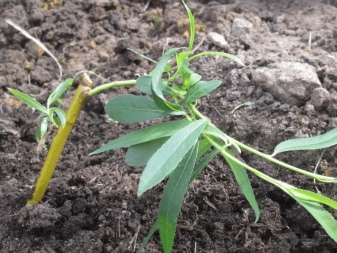

Step-by-step instructions for making a hedge in the country.
- The cut branches are wrapped in polyethylene, you can also dig them into slightly damp sand. This way they will be better preserved until disembarkation.
- The site also needs to be prepared - cleaned of weeds, dug up, loosened. The cuttings are stuck into a fairly moist soil, one or two growth buds should remain on the surface.
- Each cutting should be watered abundantly (20-25 liters of water).
- In order for the fence to come out even, pegs are inserted in advance in the designated place, the rope is pulled. Not all owners do this, many decide to build a fence, trusting their eyes. But with ropes and pegs it is safer.
- For greater confidence, the base of the cuttings can be soaked in water for 2-3 days or sprinkled with a growth stimulator (in powder form).
- If the hedge has more decorative tasks, the cuttings can be planted at a distance of 1.5-2 m. If you want to form a thicker fence, willows are planted in 2 rows, observing a checkerboard pattern.The distance between the trees is 0.7-1 m. If the willow varieties are dwarf (curb), they are planted every 0.4 m, at least.
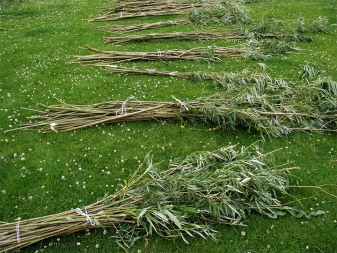
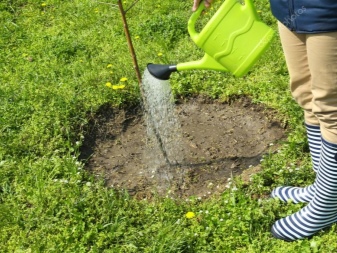
That's all, nothing else needs to be done on the day of disembarkation. And then it takes time to build a hedge. The fence will keep its shape well, but it needs regular pruning. Otherwise, willow jungle will grow on the site. For the first time, trees are sent for "cutting" a year after planting. It is necessary to outline the configuration of the fence, it can be round, pyramidal, rectangular, reminiscent of a trapezoid. Subsequently, haircuts are repeated twice: in April and August.
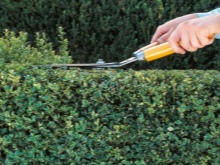
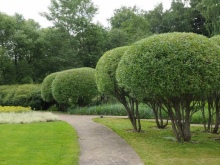
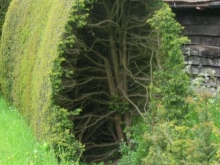
From twigs
Otherwise, it is called a willow vine fence, wattle. Willow branches are flexible and pliable. But the willow tree also needs preliminary preparation: it will not work to take it simply cut and weave a fence from the branches. The twigs must first be steamed, so they will become even more flexible. Here are the standard instructions for building a hedge.
- The site is being marked. Pegs are driven into the corners. A nylon cord or twine is pulled between the pegs. Along the thread, places are marked where there will be intermediate posts.
- Holes must be drilled in the ground (0.5 m). Stands are installed (they are cleaned of bark, soaked in an antiseptic, etc.) The buried part is coated with mastic or tar.
- A cord is pulled along the tops of the corner supports installed in the recesses, the accuracy of the tension is checked. Intermediate stakes are also exposed along the cord.
- With a two-pronged fork, the rods are cleaned from the bark. The bark should come off easily, otherwise the willow is not soaked enough.
- The lower row is weaving, which is 15 cm behind the ground. Thicker rods are used here. Separate, composing a row of rods, are stacked with an overlap in one rack. Thus, the first rod will go around 4 posts, the second will start to go around from the third.
- The bottom row can be reinforced with wire.
- Where the first row bypasses the front of the rack, the second will be located behind. And this will be the subsequent alternation. After four rows, the braid must be strengthened with a mallet.
- Every 7 rows, a wire is woven, this is how the fence is strengthened.
The ends of each row must be cut, screwed to the extreme supports. The work is done.
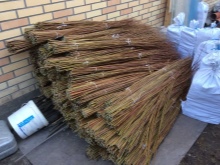
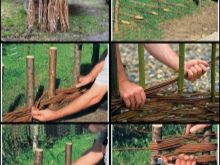

Care Tips
As a flower bed, a flower garden, a flowering shrub needs care, so does a willow fence, especially a living, fast-growing one. Little tips for beginner gardeners:
- if a "bald patch" appears in the fence, it cannot be revived, you need to insert a new plant;
- young branches are leveled with pruning shears or garden shears, thick ones - with a brush cutter;
- chemical agents are used as a last resort, unless the cause of the lesion is precisely established, and there is no other way to correct it;
- top dressing should be dosed;
- regular watering is required for spring plantings;
- only healthy, proven material should be used for disembarkation.



If you properly prepare the branches for the wicker structure, if you deepen the pillars correctly, such a fence does not actually require maintenance. But do not forget about the timely treatment with an antiseptic. Matt varnishes are used, as well as car oil.
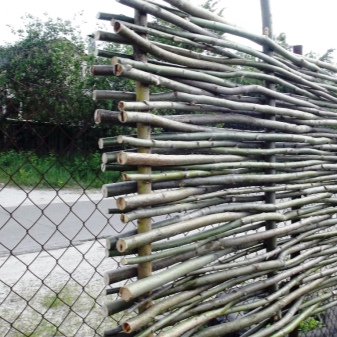

Beautiful examples
And such examples will inspire to decorate the site.
- Combined construction of uncomplicated weaving.
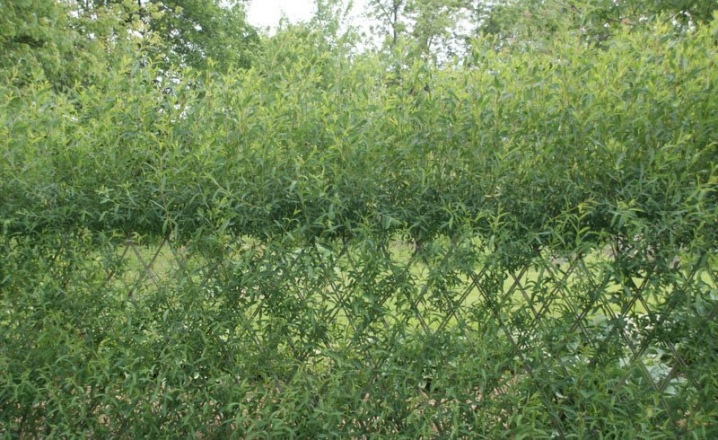
- The roundness is attractive too.

- The color combination is wonderful.
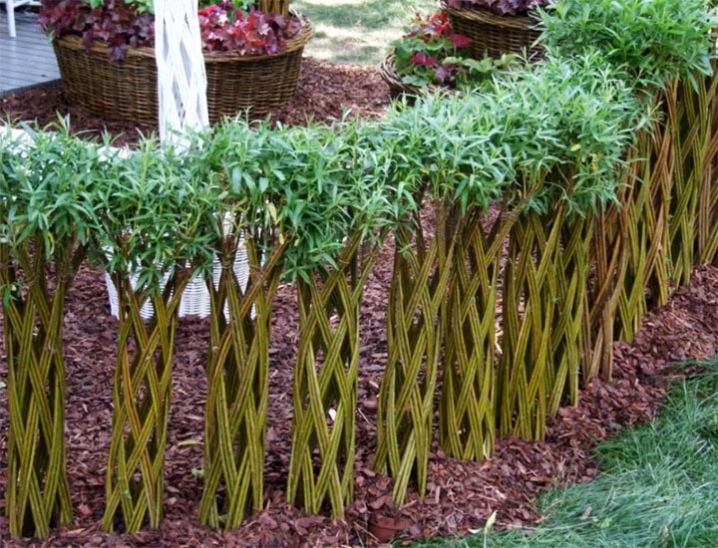
- Landscaping is a whole science.

- A beginner can do it too.
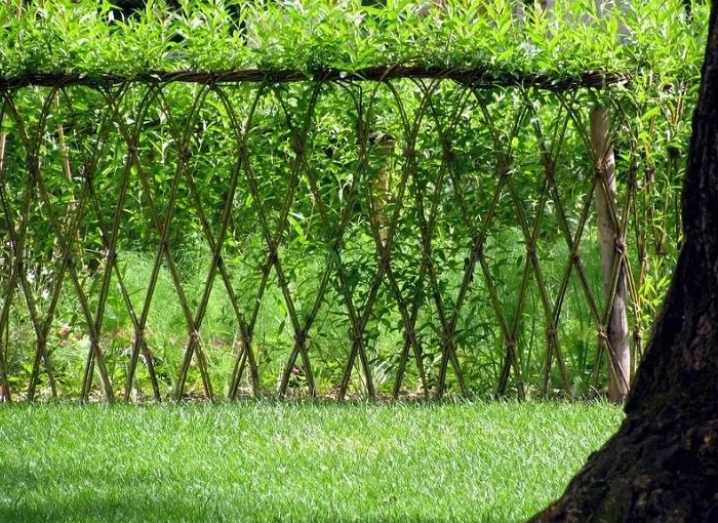
- It looks natural and laconic.
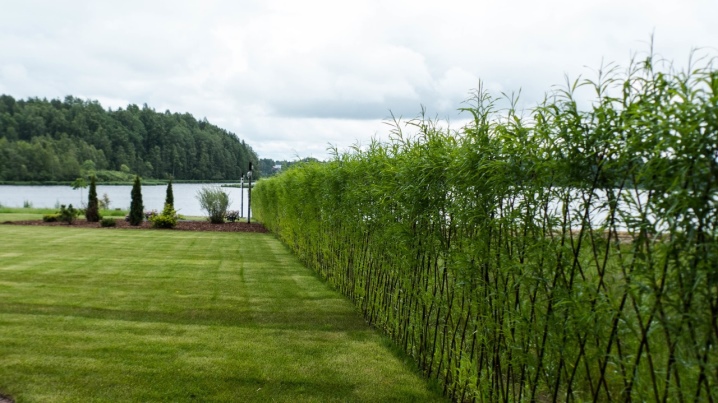
- Such a palisade will keep its shape well.
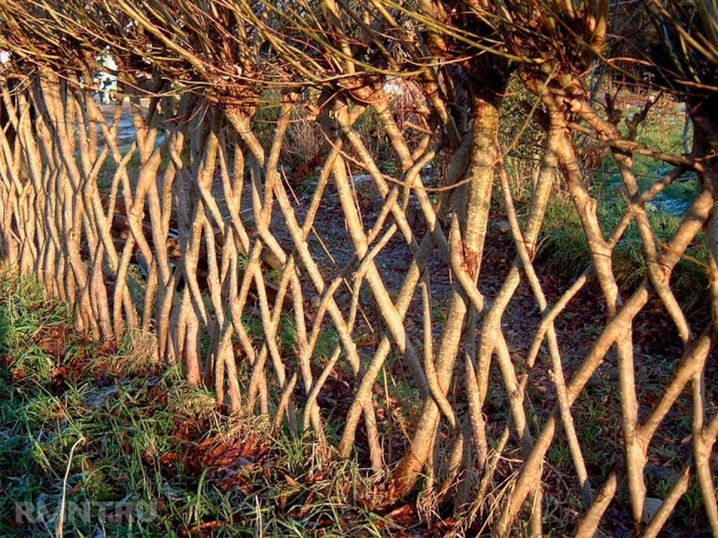
An illustrative example of caring for a willow fence can be seen in the following video.



































































The comment was sent successfully.